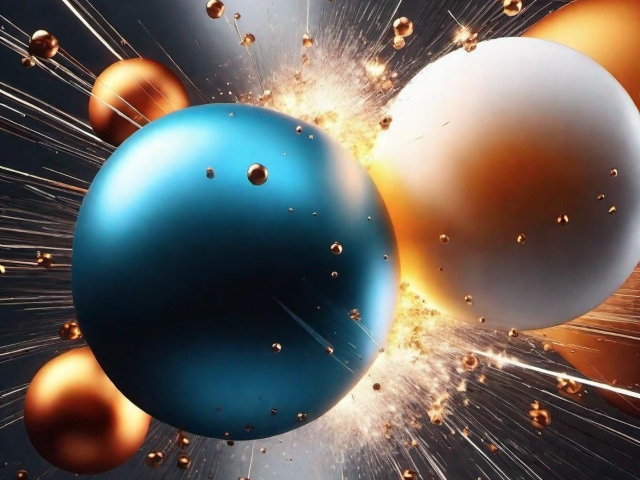
-
CERN Now Wants To Build An Even Bigger Atom Smasher For R360 Billion [Video]
09 Feb 2024 by Heinrich in Science, Tech/Sci, Vibe, World
[imagesource:wonderai]
Researchers at the world’s biggest particle accelerator have put forward proposals to build a new, even bigger atom smasher.
The proposed Future Circular Collider (FCC) would be 91 kilometres long, dwarfing its predecessor, the 27 kilometres Large Hadron Collider (LHC), located at the European Organisation for Nuclear Research (CERN) near Geneva.
Physics peeps want to use the FCC’s enhanced size and power to investigate the limits of the ‘Standard Model of particle physics’ – the current best explanation for explaining how the universe’s tiniest components behave.
They hope to find unknown particles and forces by smashing particles at even higher energies, as well as investigate the nature of dark matter and dark energy, two invisible ‘forces’ thought to make up 95% of the universe.
Fabiola Gianotti, CERN’s director-general, said at a news conference Monday:
“The FCC will not only be a wonderful instrument to improve our understanding of the fundamental laws of physics and nature, but it will also be a driver of innovation, because we will need new advanced technologies, from cryogenics to superconducting magnets, vacuum technologies, detectors, instrumentation — technologies with a potentially huge impact on our society and huge socioeconomic benefits.”
Atom smashers like the LHC collide protons together at close to the speed of light while looking for ‘rare decay products’ that could be clues to new particles or forces. This helps physicists get their best understanding of the universe’s most fundamental building blocks and how they interact, described as the Standard Model of physics.
[imagesource:wikicommons]
This model has massive gaps in its data, despite being our most comprehensive explanation, making it totally incapable of explaining where the force of gravity comes from, what dark matter is made of, or why there is so much more matter than antimatter in the universe.
Despite the potential payoff of a new collider, some scientists remain sceptical that the expensive machine will encounter any new physics. One of the critics is Sabine Hossenfelder, a theoretical physicist at the Munich Center for Mathematical Philosophy, who tweeted: “It would, at the present state of knowledge and technology, not give a good return on investment. There are presently better avenues to pursue than high energy physics.”
Besides all the science jargon from excited physicists, the cost of this project is likely to grind it to a halt sooner rather than later. At R360 billion, we might have to survive without knowing where gravity comes from for a few more decades. We’ve managed so far.
Besides, how are we going to fund all our wars if we spend so much money on exploring the secrets of the universe? Priorities people.
[source:livescience]
Latest News
-
Game, Seth, Match – Goodbye 2024
Hey Guys - thought I’d just give a quick reach-around and say a big thank you to our rea...
-
Breakfast Of Champions: Hollywoodbets Kenilworth Racecourse Breakfast Gallops Is Back!
[imagesource:CapeRacing] For a unique breakfast experience combining the thrill of hors...
-
Need NYE Plans? Cafe Caprice’s Night Of Enchantment Masquerade Party Could Do The Trick
[imagesource:howler] If you're still stumped about what to do to ring in the new year -...
-
Buckingham Palace Steps In After Staff Christmas Party Spirals Out Of Control
[imagesource:maxandeli/facebook] It's not just in corporate that staff parties get a li...
-
Designer Babies Are Running Into Trouble As Teens, Grappling With Being ‘Experiments’
[imagesource:here] Imagine being born with the weight of your parents’ version of per...
-






























